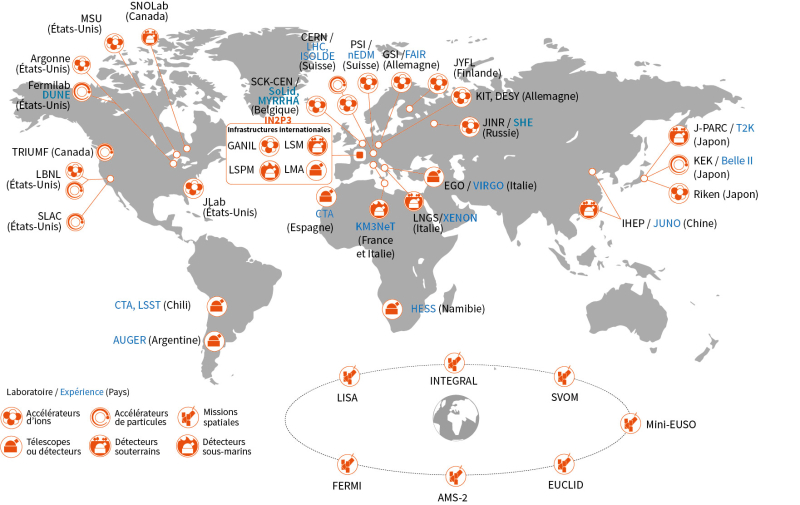An open global strategy
The Institute has many bilateral and multilateral collaborations with its partners in Europe and around the world. With them it is involved in defining common research and funding strategies and initiating programmes that meet its needs and activities. Three objectives are targeted: developing excellence, deploying major infrastructures and encouraging the mobility of researchers.
Members of more than 80 nationalities are present in IN2P3 laboratories, with around 30% of staff being foreign. This mix reflects the links forged over the years with leading countries in the fields of nuclear physics, particle physics and astroparticle physics, but also a growing presence of these fields of research in emerging countries.
To encourage and support these collaborations, IN2P3 has a department devoted to setting up and supporting European and international projects (Partnership, Europe and International Cooperation Department). This provides advice, expertise and legal monitoring, as well as links with dedicated CNRS departments (including the European Research and International Cooperation Department - DERCI - and CNRS representative offices abroad and in Brussels) to support researchers in their international endeavours.
Present on five continents
IN2P3 international strategy extends to several continents beyond Europe, and in recent years it has been extended to South America and Asia in particular. Collaborations are carried out within the context of framework and specific agreements between IN2P3 and its international partners. The vast majority of these are based on major research infrastructures around the world:

CNRS international cooperation tools
IN2P3 research teams also use CNRS international cooperation tools designed to support collaborations and researcher mobility:
- 22 International Emerging Actions (IEA): Selected through an annual call for projects, these joint research programmes are devoted to emerging research topics between two international partners.
- 2 International Research Networks (IRN): TERASCALE (International research network on the experimental and theoretical search for new physics at the TeV scale) and EUREA (European ultra-relativistic energies agreement).
- 10 International Research Programmes (IRP): With Argentina (ALFA-AC), Brazil (Subatomic Physics), Italy (COLL-AGAIN), Czech Republic (NuAG), Poland (COPIGAL), Romania (COSMA), Ukraine (IDEATE), Russia (JOULE), India (FI-NS) and Japan (NuPIC).
- 5 International Research Laboratories (IRL): Centre Pierre Binetruy (USA), FCPPL (China), FKPPL (South Korea), Kavli-IPMU (Japan), TYL-FJPPL (Japan).